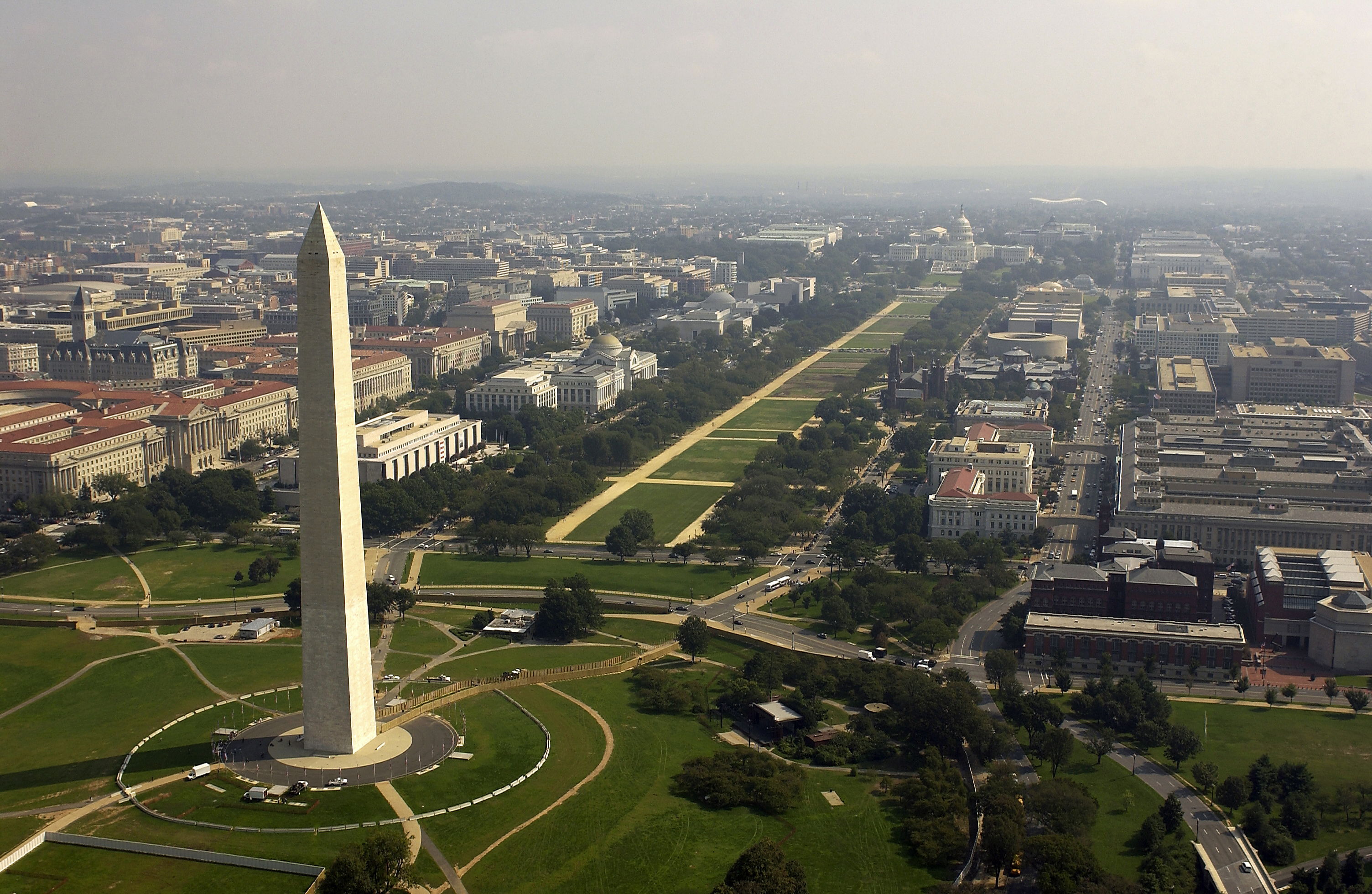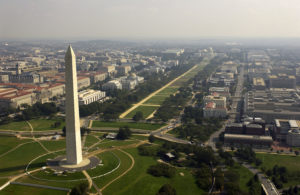Summary

Intro and Overview
The M-Enabling Summit Conference and Showcase was held in Washington DC June 17 – 19. M-Enabling is dedicated to promoting accessible and assistive technologies, and is an annual meeting place for people who create and contribute toward accessible ICT products and services. Each year, it draws an eclectic mix of people from across the world who are passionate about accessibility.
I had the privilege to attend the conference on behalf of my employer, The Viscardi Center, a network of nonprofits providing a lifespan of services to educate, employ, and empower people with disabilities. Over the course of two-and-a-half days, I spoke with and heard from many interesting people, some of whom I knew and some of whom I was meeting for the first time, about the landscape of accessibility. The attendees included representatives from city, state, federal and foreign governments, academic institutions, small and large nonprofit service and industry groups, accessibility and assistive technology vendors, startups, and large corporations. The vibe of the conference was incredible; everyone was there to collaborate and discuss the important issues facing the accessibility space, and I felt like everyone came away with valuable insights and relationships.
High Level Synopsis
The theme for this year’s Summit was “Transforming Users’ Experience,” and the exhibitions, plenary sessions, and breakouts were heavily focused on current and future user experience innovations and emerging technologies. Throughout the conference, hundreds of speakers, exhibitors and attendees connected and engaged through a packed schedule of keynotes, panel discussions, workshops, networking sessions, and of course, meals. As with any good industry event, it was exhausting, and I didn’t get to everything I wanted to.
One of the more impressive parts of this year’s event was the quality of keynote speakers the organizers lined up. Neil Romano of the National Council on Disability started things off strong with a rousing opening speech, with an intro from Frances West. On day 2, the United States Secretary of Transportation, Elaine Chao, gave the first Keynote, discussing the Department of Transportation’s mandate to ensure all current and future modes of transit, including autonomous vehicles, are accessible. The Chairman of the Federal Communications Commission (FCC), Ajit Pai closed out the second day with a Keynote focused on extending accessibility mandates in communication technology, and ensuring that access is baked into emerging technologies from conception.
Aside from the big names and packed crowds, M-Enabling also had a lot to offer with its smaller breakout sessions, focused on the following topics:
Smart Cities for All “Last Mile” Solutions; Artificial Intelligence for User Interfaces; IoT and Robots for Smart Homes; Real World End User Experience; Accessible Media Platforms Entertainment; Self-Driving and Autonomous Mobility; Augmented Reality; International Trends in Digital Accessibility; IAAP & W3C: Artificial Intelligence for Web Accessibility; Baby Boomer Strategies; and Higher Education
One session track that was particularly novel and interesting to me was “Smart Cities For All,” an offshoot of the G3ict dedicated to accessibility in smart city innovations and development. Those sessions combined many of the conceptual ideas of accessibility with modern, real-world use in a fast-growing field. Although the biggest draws for the conference were generally those focusing on popular emerging technologies, (5G, AI, IoT & Smart Devices, AR/VR, Autonomous Vehicles, etc.) I found some of the most useful and engaging sessions were the “End User Solutions Demos,” which brought in exhibitors and innovators on the leading edge of assistive technologies and devices designed specifically for end users with specific conditions and impairments. Ultimately, given the breadth of topics and represented stakeholders present, attendees had more than enough options to choose from.

Washington, D.C. (Sept. 26, 2003) — Aerial view of the Washington Monument with the Capitol in the background. DoD photo by Tech. Sgt. Andy Dunaway. (RELEASED)
Best Sessions / Key Takeaways
Through the conference, I attended 17 sessions and events, all of which provided some value, either around a topic I was well versed in such as legislation, or in a topic I was unfamiliar with such as accessibility standardization. From my perspective, the three best sessions of the conference were “Tech and Employment,” “Defining an Inclusive Smart City,” and “Extended Reality.” Although I was not able to attend every single session, I felt that I left the conference with some poignant insight that I can confidently use and share moving forward.
“Tech and Employment” focused on inclusive hiring practices for attracting and retaining talent with disabilities, as well as the importance of accessible technology in fostering an inclusive work environment. The panel included representation from the Envision Workforce Innovation Center, the Job Accommodation Network (JAN), The Department of Labor Office of Disability Employment Policy (ODEP), U.S. Jobs, Accenture, and EY. The discussion touched on things like telecommuting and the gig economy, Accessibility management models, Microsoft’s Autism hiring program and interview process, and organizations like TeachAccess that teach accessibility to computer science students. One fact that resonated with me was that by 2020, 40% of the workforce will telecommute for part or all of their work, which has the potential to drastically change employment outcomes for people with disabilities. I came away inspired by new and improved employment practices that can help move the needle on disability employment.
“Defining an Inclusive Smart City” brought together city government and technology leaders for a discussion on evaluating inclusion in a “smart” city. The panelists represented Chicago’s Mayor’s Office for People with Disabilities, AT&T and Microsoft, each of which are deeply involved with the G3ict’s Smart Cities for All initiative. The moderator, G3ict’s VP of Global Strategy and Development, James Thurston, shared the best practices developed by that organization for evaluating smart cities – their “Innovation Playbook” – and the panelists all brought unique and relevant perspectives to how their organizations are working in the space to ensure that smart cities are inclusive. One thing that was cemented in my mind following that session was that for any “smart city” project to succeed, you need the buy-in of executive stakeholders from throughout a city: city government and other public sector organizations, NGO’s and industry groups, technology companies and other private sector, and academic institutions.
“Extended Reality” brought together technologists and academics leading the field in AR/VR/XR technologies, from AT&T, Cornell University and Cornell Tech, Magic Leap, Verizon Media, and Oculus to discuss how these technologies might impact accessibility and the experience of users with disabilities moving forward. Although I had previously thought on and discussed how AR/VR might be utilized to improve outcomes for people with disabilities, until this session, my thinking was largely limited to ideas of specific use cases for pwd. The panel presented a future in which XR technologies, either through wearables or otherwise, are deeply ingrained in everyone’s everyday lives the way that smartphones are today. In this future, those devices or technologies have built-in accessibility features (also like smartphones) that make the world around a user more accessible.
Close
The atmosphere at the 2019 M-Enabling Conference was one of collaboration and optimism. Everyone seemed genuinely interested in effecting change in technology to improve outcomes for aging people and people with disabilities, and the exchange of information was astounding. New accessible technologies are rapidly transforming the way users interact with digital interfaces. These innovations are already helping support independent living in an interconnected world for seniors and persons with disabilities. These technological advances are becoming an important differentiator for organizations who prioritize them.
Having said that, there is still work to be done. Talking about it is important, networking with like minded professionals is crucial, and showcasing what you’ve already done is nice. BUT, for every problem that is solved, three more might spring up. Everyone working in the accessibility space needs to continue working, and more people need to become activists and advocates. All companies need executive sponsors of accessibility and disability inclusion. We need to get to a point where every new product and environment is built with accessibility as a first principle, and we are not there yet.
I wanted to close by thanking the event organizers, E.J. Krause, the G3ict and the IAAP, along with all of the conference sponsors. M-Enabling is a special event each year, and I am excited to see what next year’s Summit brings.